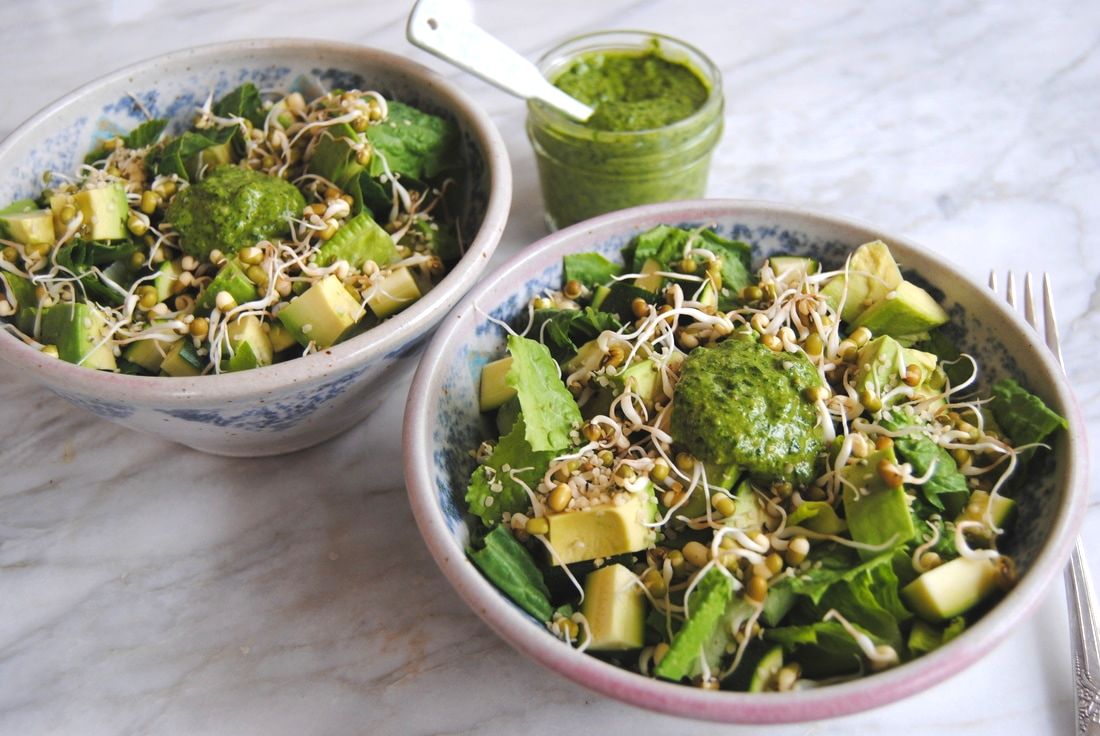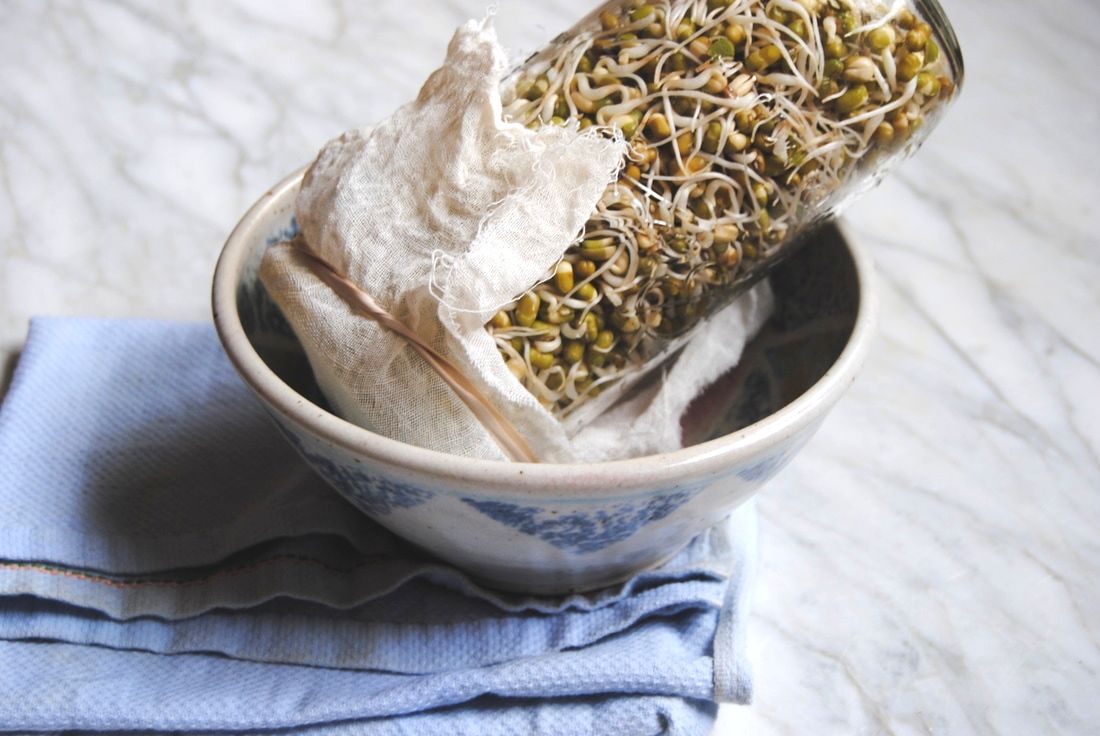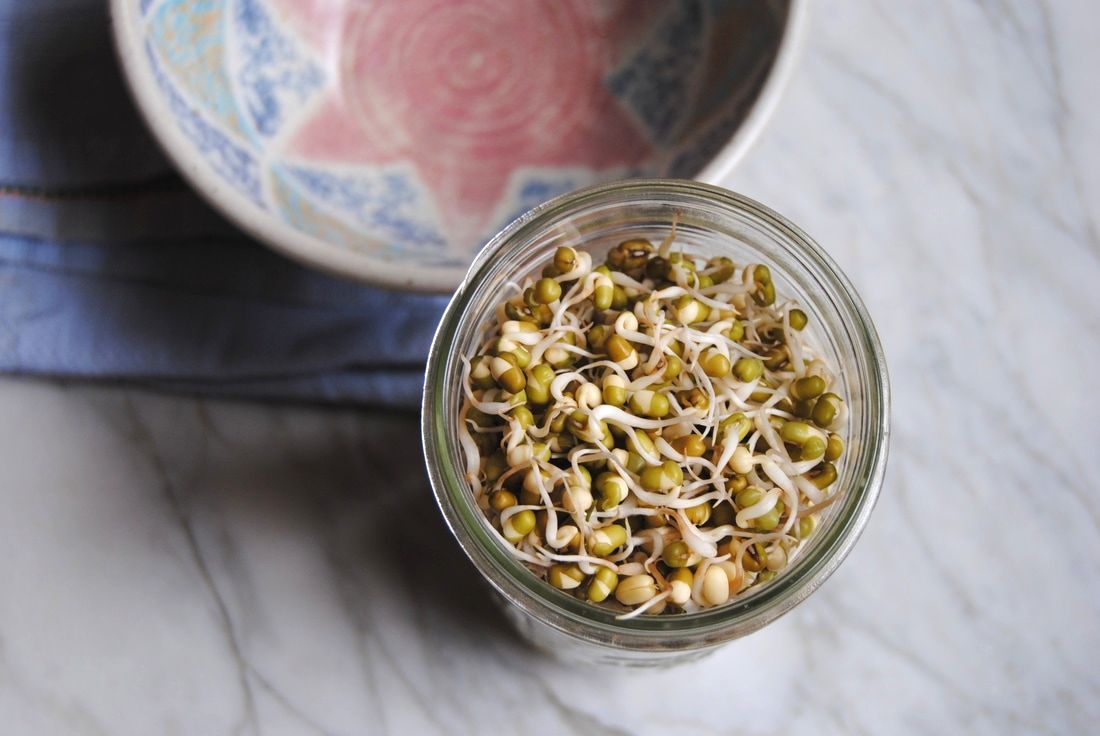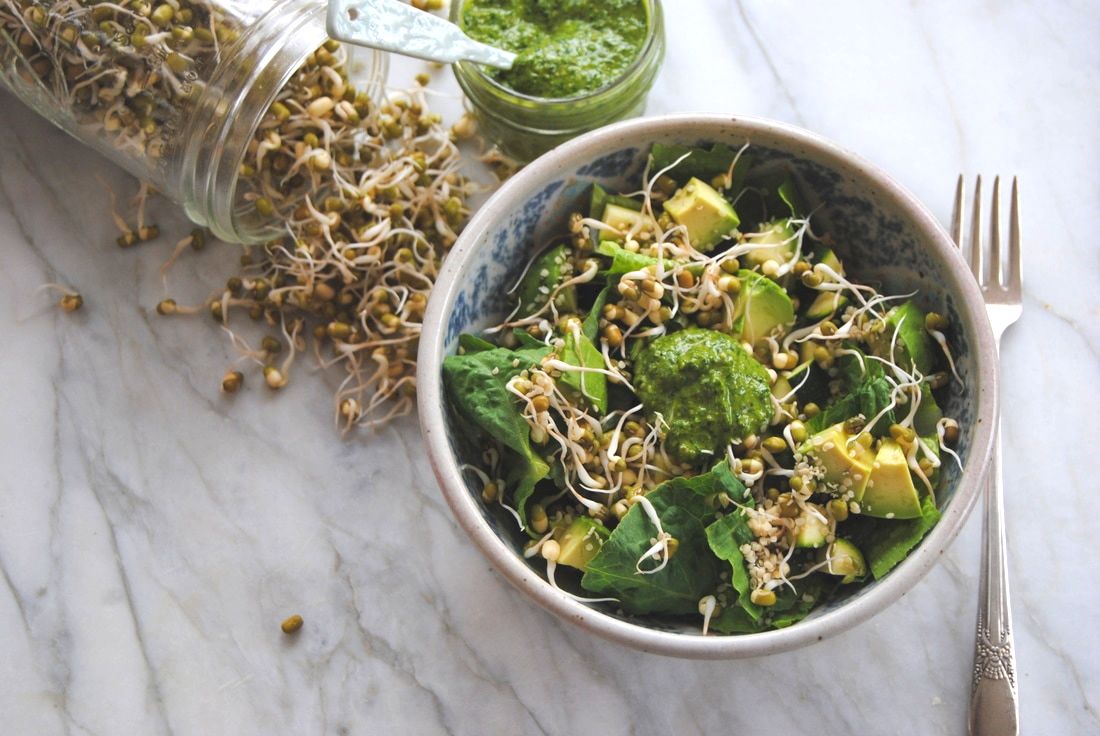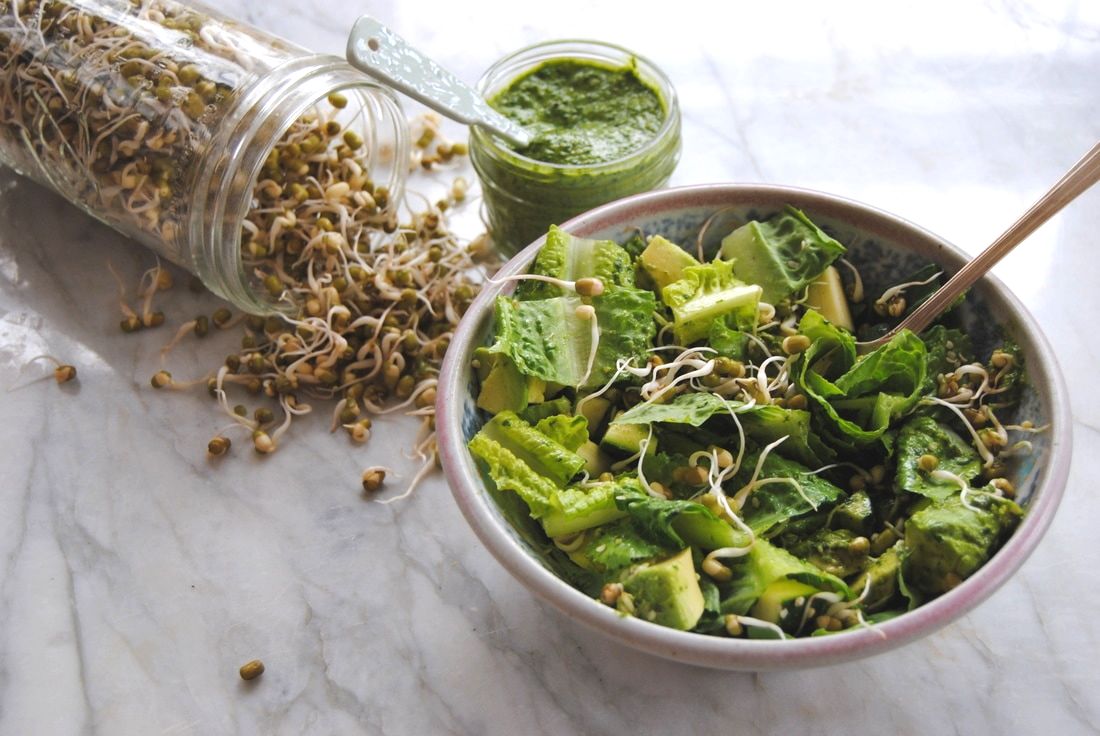|
Ever wondered what those "sprouts" that you are sometimes offered on sandwiches or salads really are and why they are so darn good? Well it you have, you're in the right place! This week is dedicated to all things sprouts including how to instructions and a spring inspired, sprout containing recipe. Believe it or not, sprouting at home is very, very simple and is a great use for dried beans, lentils, grains, nuts, and seeds. We find it much easier than cooking dried beans as sprouting achieves the same as cooking - it makes dried beans edible but in a much different way than the typical warm cooking method. The taste of sprouts is fresh and unique and the nutrient value is actually improved with sprouting versus standard cooking methods. Sounds too goo to be true doesn't it? As mentioned, dried beans, grains, nuts and seeds can all be sprouted. Sprouting is essentially the process of initiating plant life but stopping at the sprout phase before a new plant is formed. This week we sprouted beans but the benefits and process discussed is applicable across different sprout varieties. Though beans are a great source of vegetarian protein they unfortunately get a bad reputation for being tough on digestion - especially for people who don't eat beans often. This is because beans contain carbohydrates, specifically oligosaccharides, that can cause increased intestinal gas in some people. Beans that have been sprouted are significantly lower in oligosaccharides which means less gas formation in the gut (yay!). Beans that have been sprouted are also easier for your body to digest due to the enzyme action that takes place during the sprouting process - starch is broken down into simple sugars, proteins are broken down into amino acids, and fats are broken down into fatty acids. Essentially, sprouting does the hard digestive work for you so your body can benefit from the nutrients without the extra work - sounds great right? Sprouting also makes more nutrients available to your body that wouldn't be if some of the bean fibers weren't pre-digested. So especially if you're eating beans as a large nutrient and protein source in the diet, sprouting is important to maximize their nutritional benefit and minimize your digestive effort! Just be sure to follow safe food handling practices and work with clean hands in a clean space as the sprouting process can harbor growth of bacteria if exposed. So are you ready to get sprouting? Basic Sprouts PREP TIME: 2 minutes TOTAL TIME: 2-3 days sprouting time Servings: 1 cup sprouts Ingredients/Supplies 1/4 cup dried beans of choice (mung beans pictured above) Large glass jar and bowl Cheese cloth and rubber band Start by soaking 1/4 cup mung beans with room temperature water in a glass jar with cheese cloth or a mesh topping for 10-12 hours. Keep in mind you want a jar that is large enough for your beans to expand and sprout. A good rule is that the jar should be large enough for the beans to expand 8 times their original size. Following the soak, drain the soaking water and rinse the beans well then return the beans to the jar and cover with cheese cloth or mesh topping to allow air to circulate. Keep the jar tilted upside down in a bowl in a spot where there will not be large temperature fluctuations (cold drafts or hot humid breezes). Rinse and drain beans in the jar 3 times per day (add cool water, swirl, and drain) and make sure to angle the jar on its side to allow excess water to drain off while the beans are working hard to become a sprout. If excess water sits in the jar while the beans are germinating this can lead to sour, spoiled sprouts. Repeat the rinsing and draining process for 2-3 days or until the beans have transformed into the sprout length of your liking. Sprouts can be eaten right away, or stored in the fridge in an air tight container for 5-7 days. Super Green Sprouted Salad PREP TIME: 10 minutes + 2 days to sprout mung beans TOTAL TIME: 10 minutes + 2 days to sprout mung beans Servings: 4 salads Ingredients Salad 2 heads romaine lettuce 4 baby zucchini, diced (1/2" by 1/2") 1 avocado, peeled, pitted, and diced 1 cup sprouted beans (we used sprouted mung beans with recipe above though store bought would also work) 4 tsp hemp seeds Cilantro Pesto 1 bunch cilantro, de-stemmed 1/2 cup extra virgin olive oil Juice of 1/2 lemon, ~2 Tbsp 3 Tbsp walnuts 1 Tbsp hemp seeds 1/2 tsp sea salt 1/4 tsp pepper To make the pesto, combine the cilantro, olive oil, lemon juice, walnuts, hemp seeds, salt, and pepper in a food processor or blender and process on high until a smooth dressing is formed. Store in a glass jar fitted with a lid and place in the fridge. This dressing can be made a day in advance and kept in the fridge for later use. To prepare the salad, chop, wash, and dry romaine lettuce then place in a large bowl. Add diced baby zucchini, diced avocado, sprouted mung beans, and hemp seeds to the bowl. Divide salad into 4 servings then add cilantro pesto dressing to the top of each salad. Serve and enjoy! *Note, if you do not plan to serve all four salads at once keep salad ingredients in an air tight container in the fridge and wait to add dressing until just prior to serving. To keep the avocado from turning brown, toss in lemon juice prior to saving. Weren't we right? Sprouting is so simple and such a fun use for the dried beans sitting in your pantry that you bought and then never cooked from scratch because, well, canned is just easier! We hope this post starts you on a lifelong sprouting journey that you, your gut, and your body will enjoy. Oh, and this salad - the perfect mix of the freshest green foods to awaken your Spring palate. Best enjoyed with a warm piece of crusty bread, or at least we think so.
Enjoy and have fun! Jess and Cecelia
0 Comments
Leave a Reply. |
AuthorsJess and Cecelia welcome you to our kitchen. We are fun-loving and passionate foodies working to make the world a healthier, happier place one plant based recipe at a time. Categories
All
Archives
December 2018
|

